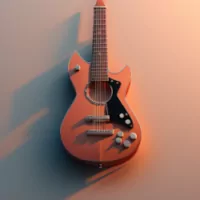Latin music encompasses the spirit of lively cultures and histories, with its catchy rhythms, rich cultural diversity, and passionate songs. The guitar, an instrument that weaves together the strands of tradition, emotion, and creativity, is at the core of this musical tapestry. In this essay, we’ll look at the fascinating and complex function of the guitar in Latin music, from salsa to bossa nova.
Rhythm is the heartbeat of Latin music, and the guitar is key in propelling the genre’s irresistible grooves. Guitarists establish the heartbeat of the music by creating rhythmic patterns that interact with percussion and other instruments. The guitar’s rhythmic contributions make listeners want to move their bodies to the throbbing rhythms, from the syncopated rhythms of salsa to the samba-infused beats of Brazilian music.
Learn to Play the Guitar
Latin guitarists frequently use a variety of strumming styles to generate dramatic textures. Rasgueado, a technique that involves quick strumming of the strings with the fingers, adds percussive aspects to the music that increase its rhythmic complexity. Guitarists also employ methods such as golpe (tapping the guitar body) to give a percussive punch to the overall sound.
The guitar’s function in Latin music goes beyond rhythm; it also carries expressive melodies that capture the genre’s passion and nostalgia. The expressive playing of the guitar generates a multitude of emotions, allowing listeners to feel emotionally linked to the stories being told, from the soulful strains of bolero to the charming melodies of bossa nova.
Latin music frequently employs vivid and lively harmonies, and the guitar’s particular chord voicings contribute to the genre’s harmonic tapestry. These voicings illustrate Latin music’s cultural richness, from the lush harmonies of Cuban son to the jazzy progressions of bossa nova. Guitarists enrich the song with unique chord choices that represent the genre’s regional nuances.
The guitar’s role in Latin music can be found in a variety of subgenres:
Salsa: In salsa music, the guitar contributes to the dynamic rhythm section, driving the genre’s danceable grooves.
Samba: The rhythmic and percussive playing of the guitar contributes to the addictive energy of Brazilian samba music, creating a musical foundation for both dancers and musicians.
Bossa Nova: Bossa nova is known for its laid-back and intimate attitude, and it boasts sophisticated guitar playing that combines melodic lines with syncopated rhythms to create a uniquely Brazilian sound.
The guitar, in the world of Latin music, is a testament to the genre’s deep cultural legacy and emotional depth. The guitar, with its rhythmic skill, lyrical expressiveness, and harmonic diversity, brings the stories, traditions, and passions that define Latin music to life. The guitar’s strings echo the vivid heartbeats of many civilizations, connecting them in a celebration of rhythm and melody from the streets of Havana to the beaches of Rio de Janeiro.
Photo by Allef Vinicius on Unsplash

